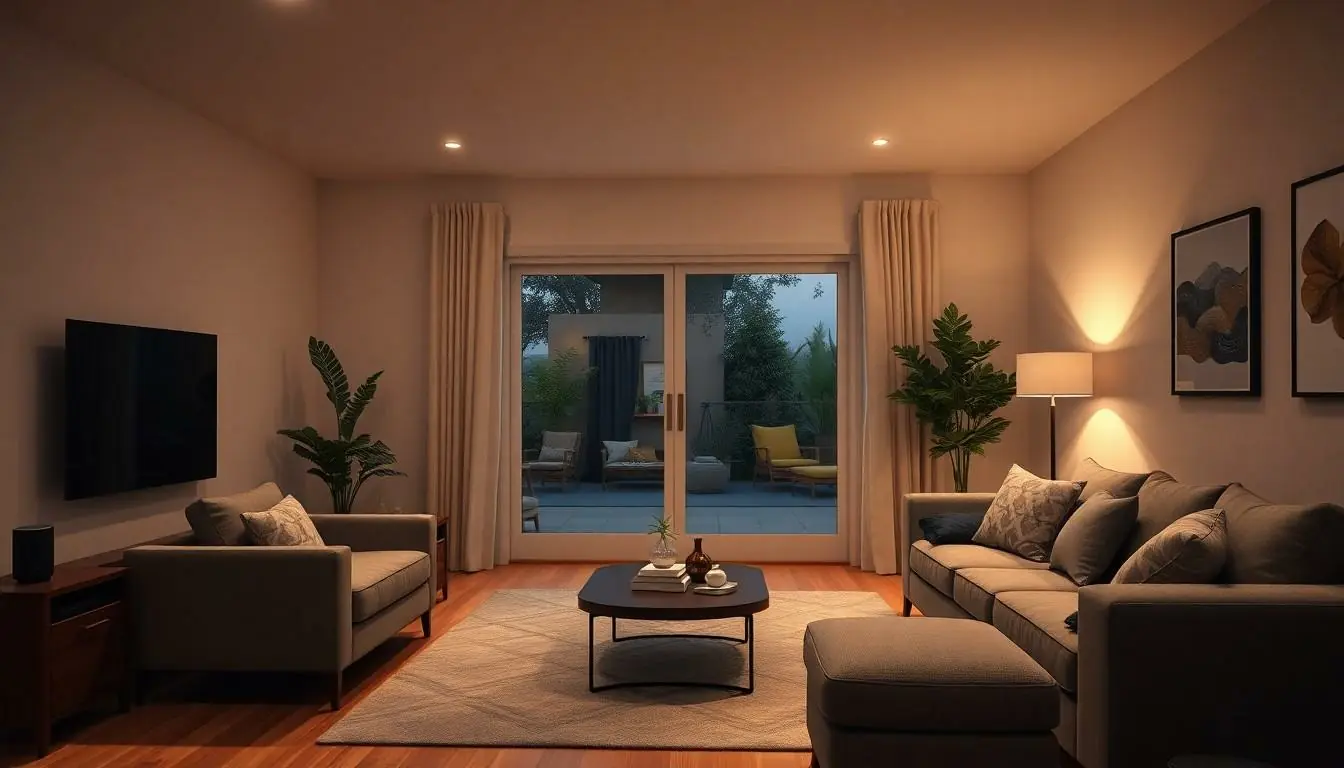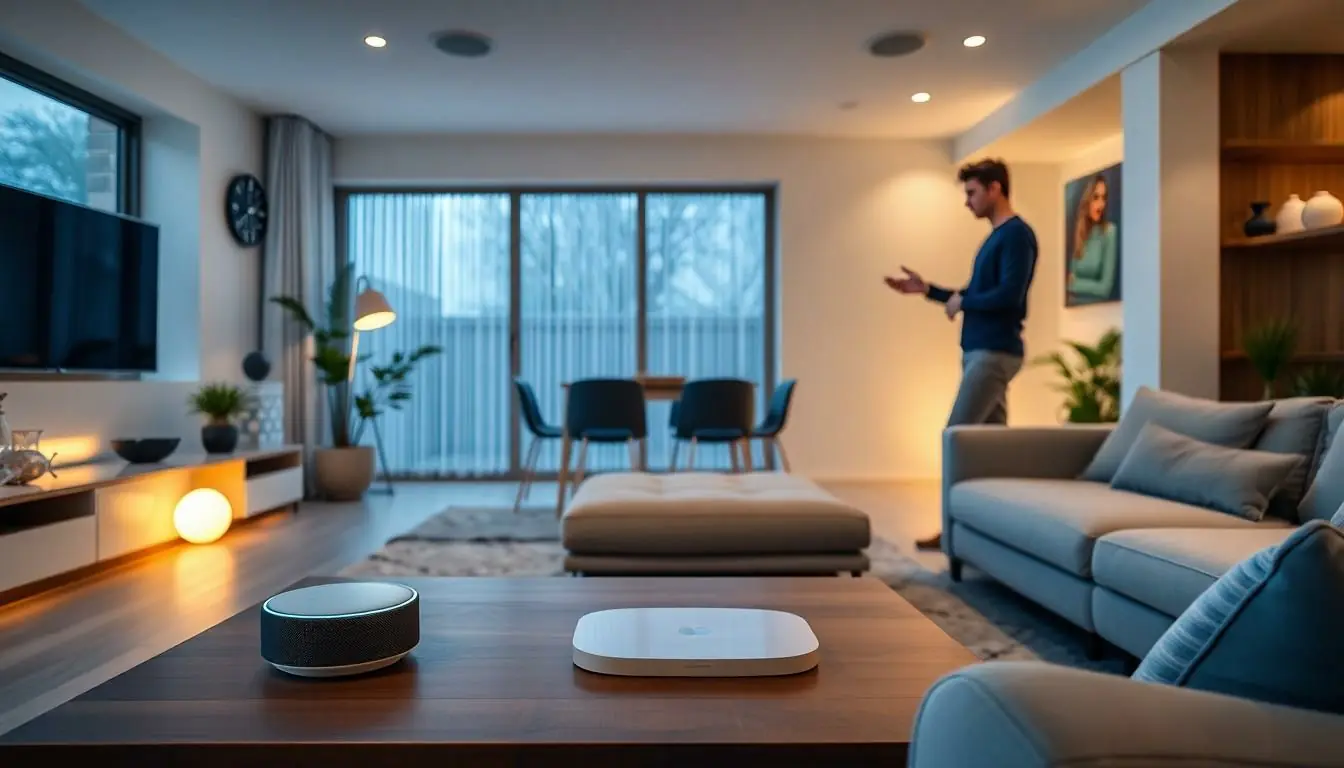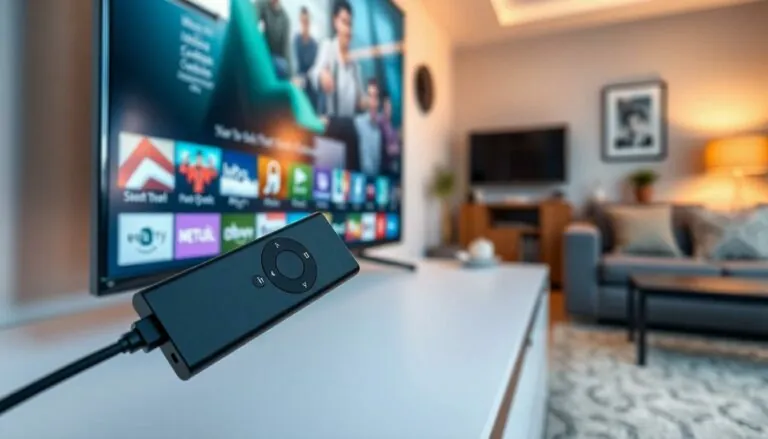Imagine a world where your gadgets obey your every command without a hint of rebellion. Sounds like a sci-fi movie, right? Well, welcome to the age of consumer electronics control, where smart devices transform homes into futuristic havens. From voice-activated assistants that respond faster than your best friend to smart thermostats that know when you’re too hot to handle, the possibilities are endless.
Table of Contents
ToggleOverview of Consumer Electronics Control
Consumer electronics control defines how smart devices manage and enhance home automation. This concept encompasses various technologies that enable seamless interactions among gadgets. Smart speakers, for example, allow users to control lighting, security systems, and entertainment systems through voice commands.
Innovative devices equipped with sensors can monitor and adjust home environments. Smart thermostats learn user schedules, optimizing energy efficiency by adjusting temperatures automatically. User-friendly mobile applications also serve as control hubs, enabling remote management of various devices from smartphones or tablets.
Integration plays a crucial role in consumer electronics control. Devices from different manufacturers can often work together, forming a cohesive system that enhances user experience. For instance, connecting a smart light bulb to a home security system offers additional layers of convenience, turning lights on when cameras detect movement.
Security features are vital in consumer electronics control. Many systems employ encryption protocols to protect user data and privacy. Additionally, updates ensure that devices remain secure against potential vulnerabilities.
Energy management is another key aspect. Smart plugs can monitor energy usage and allow users to track consumption, leading to reduced power bills. Scheduling appliances to run during off-peak hours maximizes efficiency.
Interactivity defines the modern consumer electronics landscape. Users can customize settings and receive notifications about device statuses, maintaining greater control over their home environments. By utilizing these advanced technologies, households can enjoy enhanced safety, convenience, and efficiency.
Benefits of Consumer Electronics Control

Consumer electronics control offers significant advantages, transforming everyday living through automation and connectivity. Key benefits include enhanced user experience and improved energy efficiency.
Enhanced User Experience
Smart home technology creates a seamless user experience. Voice command features enable effortless management of multiple devices. Integration of various systems lets users control lighting, security, and entertainment from a single interface. Customization options allow individuals to tailor settings to personal preferences. Notifications alert users to important events, ensuring peace of mind. This intuitive control leads to increased satisfaction with home environments.
Energy Efficiency
Energy efficiency is a critical advantage of consumer electronics control. Smart devices monitor energy consumption in real-time, allowing for informed decisions. Scheduling appliances to operate during off-peak hours optimizes energy usage. Automated systems adjust settings based on occupancy, reducing waste. Data from smart plugs and thermostats aids in identifying energy usage patterns. Overall, these technologies contribute to lower utility bills while promoting sustainability.
Technologies Behind Consumer Electronics Control
Various technologies empower consumer electronics control, creating a smarter home environment. Innovations such as smart home solutions and voice control systems allow for seamless interactions.
Smart Home Solutions
Smart home solutions encompass a wide range of devices designed to enhance automation. These devices include smart thermostats, security cameras, and lighting systems. Users can control these gadgets through mobile apps or centralized hubs, enabling convenient access from anywhere. Interoperability is a key factor, as systems from different manufacturers can work together to create a cohesive environment. Real-time monitoring, data analytics, and user-defined settings optimize device performance. For instance, smart plugs can track energy usage and schedule appliances to operate during lower-cost periods, leading to significant savings on energy bills.
Voice Control Systems
Voice control systems transform user interaction with technology. Users can control smart devices through simple voice commands, making operations hands-free and straightforward. These systems utilize natural language processing to understand and respond accurately to user requests. Popular voice assistants, like Amazon Alexa and Google Assistant, integrate with various home automation devices, enhancing connectivity and functionality. Moreover, users can create custom routines, enabling multiple actions with a single command. Security features in voice control systems, such as voice recognition, provide an additional layer of protection for personal data. This technology fosters an intuitive user experience, promoting efficiency in daily routines.
Comparison of Consumer Electronics Control Systems
Consumer electronics control systems vary significantly, influenced by major brands and their specific offerings. Each brand provides distinct features that cater to different user needs and preferences.
Major Brands and Their Offerings
Amazon, Google, and Apple dominate the smart home market. Amazon’s Echo line features Alexa, enabling voice control of numerous devices. Google Nest products integrate smoothly with Google Assistant, emphasizing automation and connectivity. Apple’s HomeKit stands out through its user-friendly interface and robust security protocols. Samsung SmartThings offers extensive compatibility with devices from various manufacturers, promoting interoperability. Each brand focuses on delivering a seamless user experience, aligning their devices with customer demands for efficiency and convenience.
Features and Functionality
User-friendliness defines consumer electronics control systems. Voice recognition technology allows natural interactions, making tasks straightforward. Remote access through mobile apps enhances convenience, permitting users to control devices from anywhere. Interoperability becomes crucial as consumers prefer systems that support multiple devices and brands. Customization options let users tailor settings to their preferences, enhancing satisfaction. Security features, such as encryption and regular software updates, address privacy concerns effectively. Advanced analytics provide insights into usage patterns, promoting energy efficiency and smart scheduling of devices.
Future Trends in Consumer Electronics Control
Emerging trends in consumer electronics control highlight innovation and user experience. Voice control integration continues to expand, allowing users to engage more naturally with devices. Advanced artificial intelligence plays a significant role in personalizing user interactions, adapting to preferences over time.
Smart home technology sees increased interoperability among various platforms. Amazon, Google, and Apple lead the charge, offering solutions that seamlessly connect devices. Enhanced security measures gain importance, with encryption and biometric verification protecting user privacy and ensuring data safety.
Sustainability drives further development in energy-efficient appliances. Smart devices optimize energy consumption by learning usage patterns and adjusting settings accordingly. Scheduled appliance operation reduces costs and promotes environmentally friendly practices.
Wearable technology also influences consumer electronics control. Wearables provide health monitoring and can communicate with smart home systems, offering data-driven insights. Integration enhances overall experience by connecting health data with home automation, leading to a more responsive environment.
User-centric design principles drive the evolution of mobile applications. Intuitive interfaces enable effortless navigation and management of multiple devices. Customization options empower users to tailor their smart home experiences according to specific needs.
Voice assistants continue to improve, with natural language processing refining interactions. Enhanced capabilities allow for complex commands and better understanding of context. Continuous updates bring new functionalities, keeping systems current and effective.
As remote technology advances, remote access becomes standard for managing home systems. Users can control devices from anywhere through smartphones or tablets, ensuring convenience and accessibility. Future developments will likely introduce even more intuitive features, further enhancing consumer electronics control.
The evolution of consumer electronics control is transforming how individuals interact with their homes. With advancements in smart technology and voice-activated systems, users can enjoy a more intuitive and efficient living environment. The seamless integration of devices not only enhances convenience but also promotes energy efficiency and security.
As technology continues to advance, the future of consumer electronics control looks promising. Enhanced interoperability among platforms and improved user experiences will likely lead to even greater advancements. Embracing these innovations can help users create a more connected and sustainable home, making daily life easier and more enjoyable.





